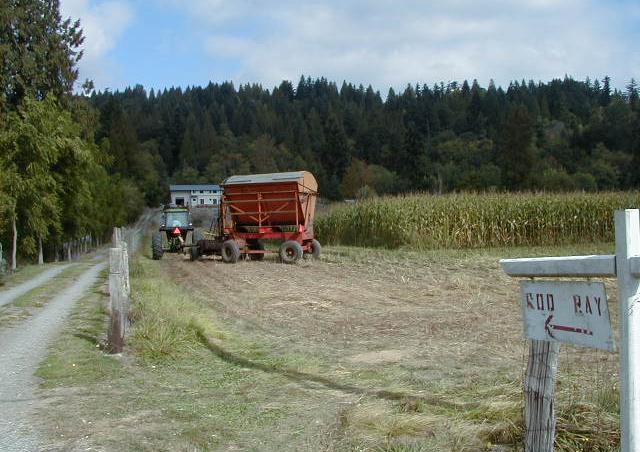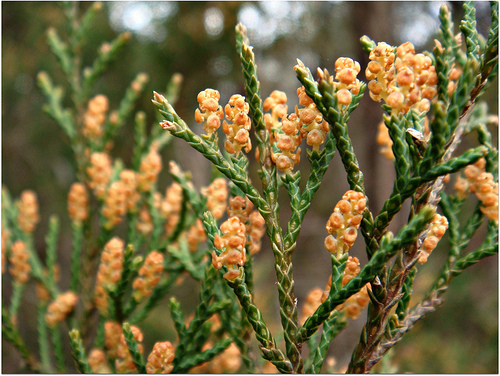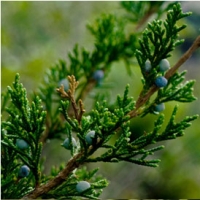Eastern redcedar is the most widely distributed conifer in the eastern United States, growing in every state east of the 100th meridian line which is the boundary between the moist east and the arid west. Redcedar’s native range has been gradually expanding since European settlement, especially in the Great Plains. This is for a few reasons: first, eastern redcedar is extremely intolerant to fire. When huge prairie fires would roar through the Great Plains, redcedar trees that had encroached into the prairie were killed off.

Since farmers have moved into the plains and suppressed fire, redcedar has been able to grow farther west than ever before. Second, redcedar has been widely planted throughout the Great Plains in windbreak plantings. Redcedar is one of the best species of tree to plant as a windbreak because it is very tolerant of drought. In addition, its dense foliage shields houses from the elements, helping to lower heating and cooling costs. The thick cover cuts down on wind so farmers all over the Great Plains have planted redcedar trees around their fields since the dust bowl in the 1930s.
Redcedar is slow-growing but long-lived. The oldest ever recorded eastern redcedar grew in Missouri and was 795 years old! They can grow in a wide variety of different habitats with many different soil types and precipitation regimes. Cedar glades are a unique habitat type where there is just a thin layer of soil over bedrock. With very little soil and a lot of sunlight, conditions become too harsh for most vegetation, but redcedar ekes out a living anywhere there are fissures in the bedrock for its roots to gain a foothold.
 Redcedar is a dioecious species, which means that some individual plants are female and other individual plants are male. Where most animal species are dioecious, most plants species are monoecious, having both male and female parts on the same tree or even in the same flower. Male redcedar trees can easily be distinguished from females because the cones on the tips of the branches of male trees turn yellow in the winter. Once fertilized, seeds are spread by either dropping on the ground or by birds, who eat the highly nutritious fruit. Seeds that drop directly on the ground usually take two years to germinate while those seeds that pass through an animal's digestive tract usually germinate the first year. This is because the acids in the animal's stomach eat through a few layers of the seed coat, jump-starting the seed's process of breaking its dormancy!
Redcedar is a dioecious species, which means that some individual plants are female and other individual plants are male. Where most animal species are dioecious, most plants species are monoecious, having both male and female parts on the same tree or even in the same flower. Male redcedar trees can easily be distinguished from females because the cones on the tips of the branches of male trees turn yellow in the winter. Once fertilized, seeds are spread by either dropping on the ground or by birds, who eat the highly nutritious fruit. Seeds that drop directly on the ground usually take two years to germinate while those seeds that pass through an animal's digestive tract usually germinate the first year. This is because the acids in the animal's stomach eat through a few layers of the seed coat, jump-starting the seed's process of breaking its dormancy!
Redcedar fruit is an important source of food for birds, and the foliage is essential for deer in the winter. While redcedar leaves are low in nutrients, they are crucial for late winter when resources are scarce. They also provide good thermal cover in the winter. Deer use redcedar as cover in the winter so often that a cedar forest is a great place to find antlers that have been shed by bucks. Now is a good time to walk through a cedar forest...keep your eyes sharp and you may find something really cool!





